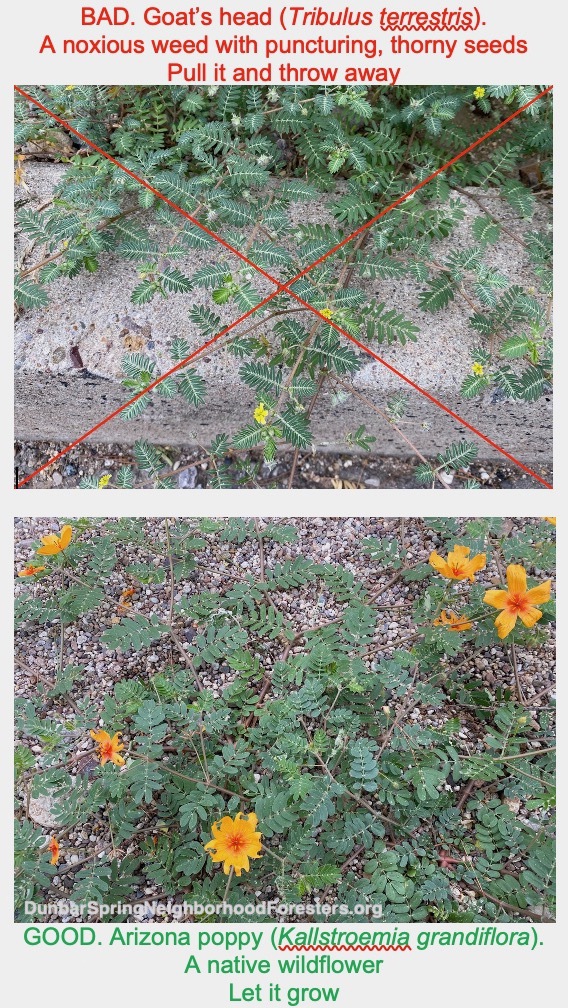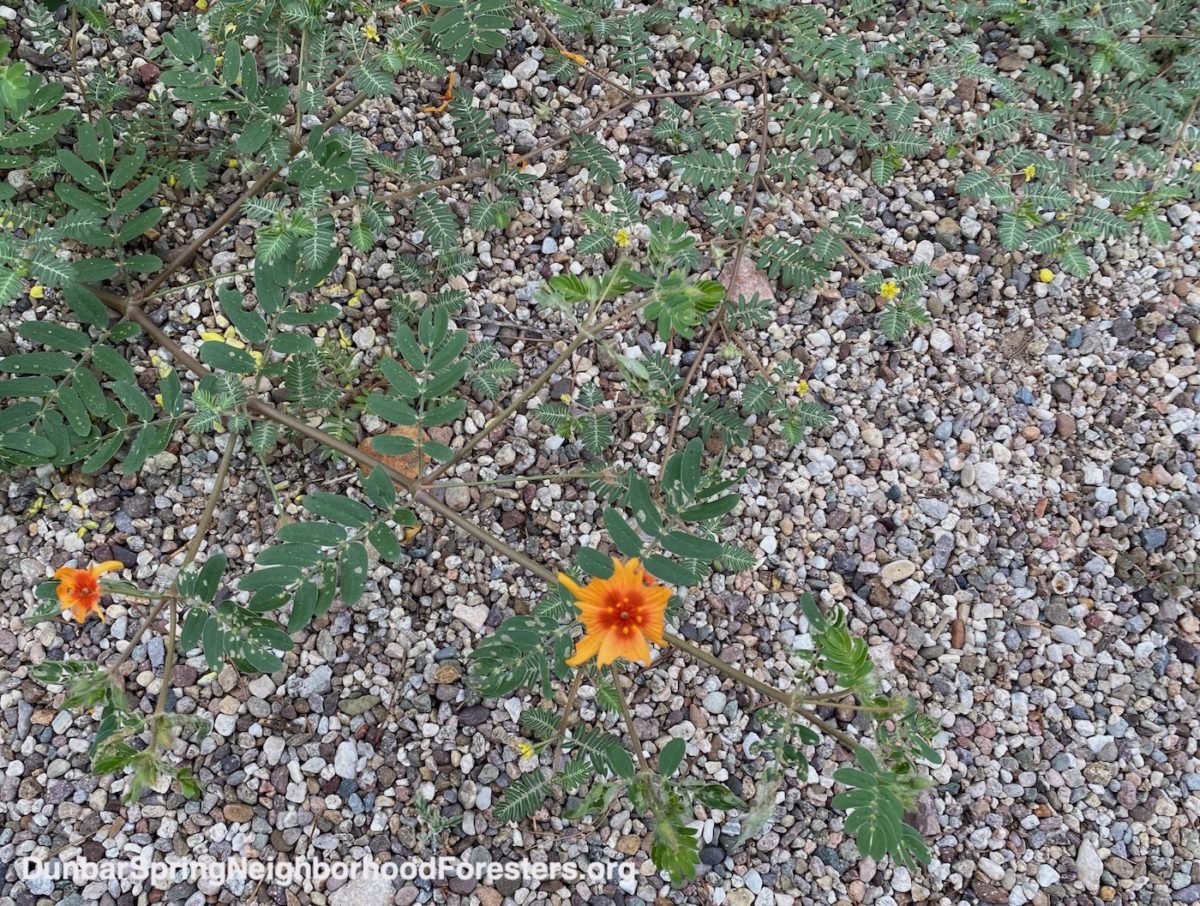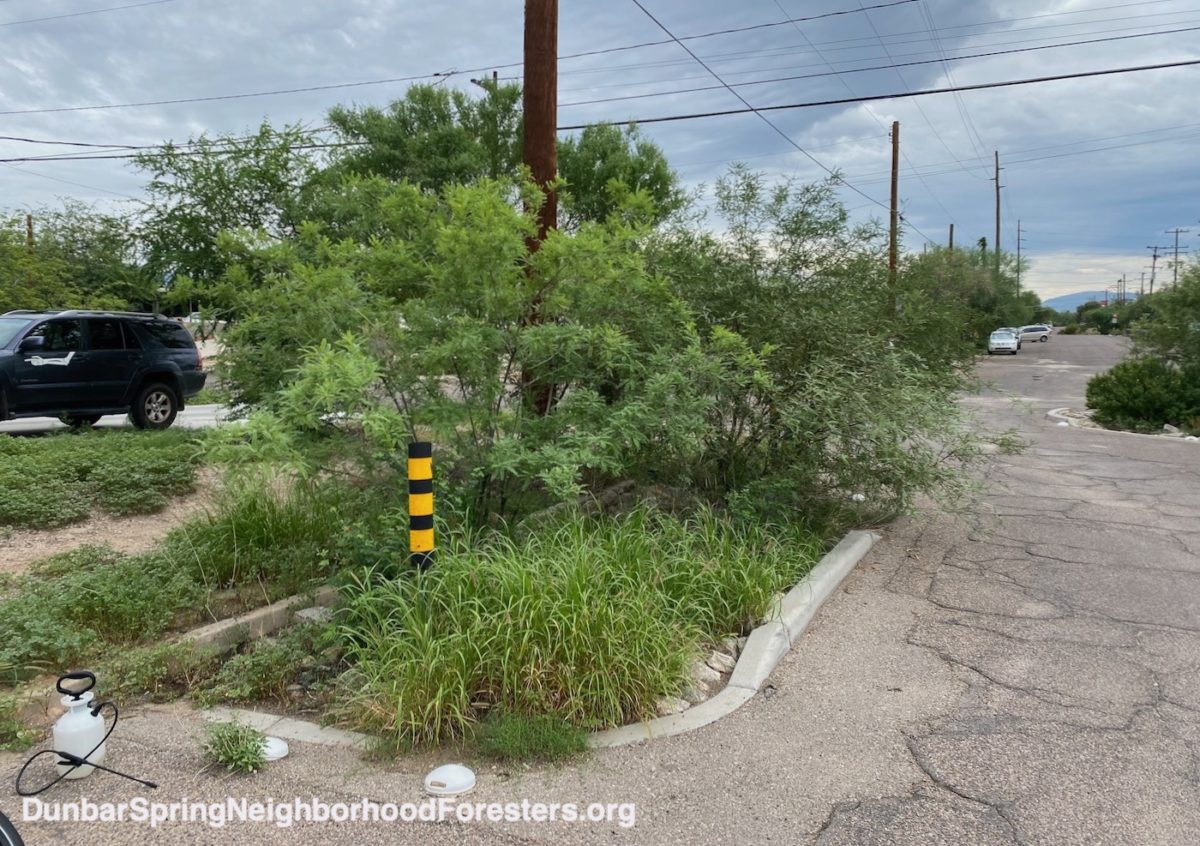With our abundant summer rains it is NOW time to remove invasive weeds before they spread their seed. The time you spend on weeding now, will pay off multi-fold in the near future if you remove that seed; because each seed is another potential weed, that can produce thousands more with its seed.
While soil is moist, it is easy to hand-pull most of the weeds—so do it NOW! Then put the weeds immediately into the garbage so their seed won’t spread.
See below for images and links to additional images to help you identify what to weed and what to leave.

But the top one is a noxious weed with thorny seeds that will puncture feet and bicycle tires, while the bottom one is a desired native wildflower.
The yellow flower is the easy way to tell which one you should remove.

See here for images and info on other weeds to pull NOW.
Bufflegrass and tumbleweed are two other weeds that are easy to hand-pull while the soil is moist, and both of these weeds are growing throughout the neighborhood currently.
See here for a video on hand-pulling bufflegrass.

The spray bottle has herbicide that was used on bermuda grass, after buffle grass was pulled. The bermuda grass is much more difficult to pull than the bufflegrass, especially when its roots (from which the bermuda grass will regrow) grow under street curbs and pavement. We strive to use as little herbicide as possible by being very strategic in its use, and only using it when hand-pulling/weeding won’t work. Can also minimize herbicide use by cutting bermuda grass back if there is a lot of growth, clear away what you’ve cut, then apply herbicide to new green growth as it emerges (when there is no rain expected).
Ideally, you also plant seed of desired native plants in the void spots where you remove weeds.
Photo: Brad Lancaster

Trees were also pruned so they don’t block pedestrians, bicyclists, and vehicles, while also making for easier access for weeding.
Photo: Brad Lancaster
